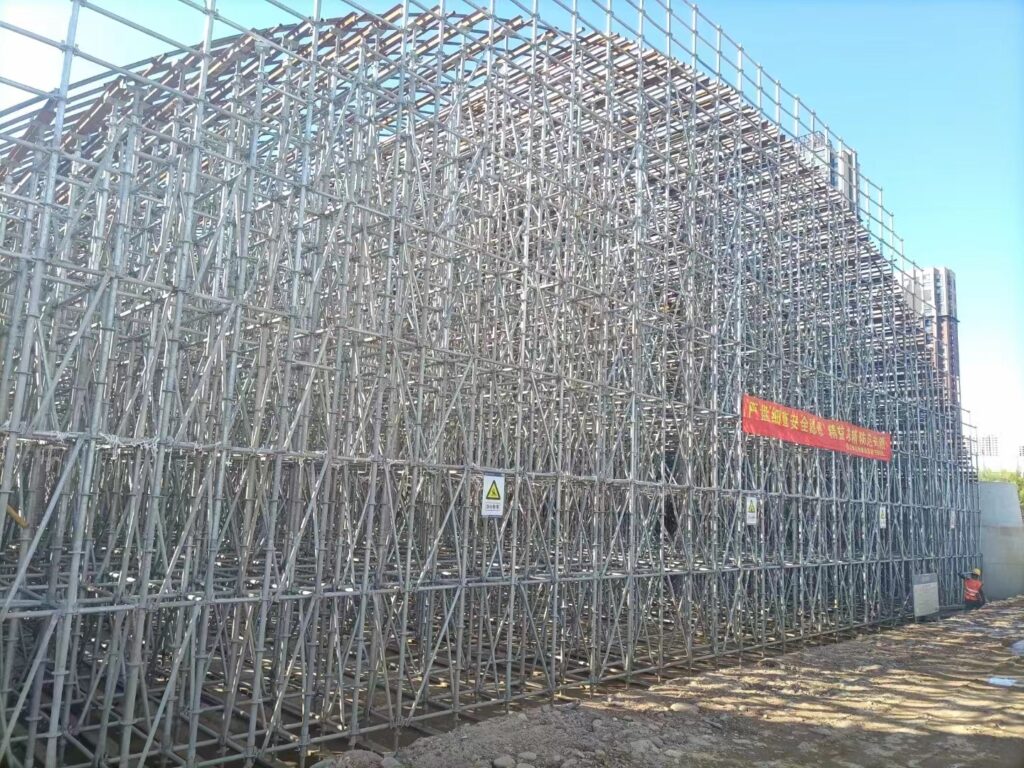Ringlock Scaffolding Advantages: Why It Outperforms Other Scaffolding Systems
In the fast-paced construction industry, choosing the right scaffolding system can make or break project efficiency, safety, and profitability. Among the diverse options available, ringlock scaffolding stands out as a modular powerhouse that outshines traditional tubular scaffolding, cuplock systems, and frame scaffolding in key performance areas. Its innovative design, robust functionality, and adaptability have made it the preferred choice for contractors tackling projects of all scales—from residential renovations to large-scale commercial and industrial developments. Below, we break down the core advantages of ringlock scaffolding and how it compares to other common scaffolding types.
1. Superior Safety: Redefined Stability for High-Risk Work
Safety is non-negotiable on construction sites, and ringlock scaffolding sets a high bar with its engineered locking mechanism. Unlike traditional tubular scaffolding, which relies on loose couplers that can loosen over time, ringlock systems use a rosette-and-wedge design with 8 connection points per node. This 3D locking structure creates a rigid, interconnected framework that resists lateral movement and accidental disassembly .
Compared to cuplock scaffolding—another modular system—ringlock’s self-locking wedges require only a few hammer strikes to secure, eliminating human error from over-tightening or under-tightening . Additionally, ringlock’s wide, anti-slip platforms and integrated guardrail options minimize fall risks, outperforming frame scaffolding which often requires separate guardrail installation. For projects where worker safety is paramount, ringlock’s structural integrity reduces accident risks far more effectively than conventional systems.
2. Faster Assembly & Dismantling: Save Time and Labor Costs
Time is a critical resource in construction, and ringlock scaffolding delivers unmatched efficiency in setup and takedown. Its standardized, lightweight components (verticals, ledgers, and diagonals) snap together via the rosette connection, requiring no specialized tools or extensive training .
Ringlock assembles 4–8 times faster than tubular scaffolding and 2x faster than cuplock systems .
A small crew can erect large structures in hours, not days, cutting labor costs significantly.
Disassembly is equally efficient, allowing quick site turnover for subsequent project phases.
In contrast, traditional tubular scaffolding demands time-consuming measuring, cutting, and coupler tightening, while frame scaffolding struggles with flexibility in complex layouts—leading to delays and higher labor expenses.
3. Unmatched Versatility: Adapt to Any Project Geometry
One of ringlock scaffolding’s greatest strengths is its ability to adapt to diverse project requirements, outperforming the one-size-fits-all limitations of other systems. Its modular design conforms to straight lines, curves, circles, and irregular shapes—making it ideal for bridges, stadiums, facades, and maintenance work .
Unlike frame scaffolding, which is restricted to rectangular configurations, ringlock handles complex geometries with ease.
It supports heavy loads (tools, materials, and multiple workers) thanks to its axial force transmission design, surpassing the load capacity of many cuplock and tubular systems .
Applications range from small residential jobs to large industrial projects, including slab formwork and bridge support .
This versatility eliminates the need for custom scaffolding solutions, saving contractors both time and money on specialized equipment.
4. Long-Term Cost-Effectiveness: Durability & Low Maintenance
While initial investment may be higher than some traditional systems, ringlock scaffolding delivers significant long-term savings through durability and low maintenance. Constructed from hot-dip galvanized steel, it resists corrosion, harsh weather, and heavy usage—extending its lifespan far beyond ungalvanized tubular scaffolding .
Its reusable components work across multiple projects, reducing waste and replacement costs.
Minimal maintenance (occasional cleaning and inspection) contrasts with tubular scaffolding’s frequent need for coupler replacement and rust treatment.
Labor savings from fast assembly/dismantling compound over time, making ringlock more cost-effective for repeat projects .
Cuplock systems, while durable, lack ringlock’s flexibility—often requiring additional components for complex jobs, which drives up costs.
5. Sustainability: Align with Eco-Friendly Construction Practices
As the industry shifts toward sustainability, ringlock scaffolding emerges as an eco-conscious choice that outperforms less sustainable alternatives. Its reusable components reduce construction waste, a major advantage over tubular scaffolding which often generates scrap from cutting and fitting .
Galvanized steel components are 100% recyclable, supporting circular construction practices.
Fewer components mean reduced storage and transportation emissions compared to bulkier frame or tubular systems .
Clients increasingly prioritize sustainable construction methods, making ringlock a competitive differentiator for contractors.
Why Ringlock Scaffolding Is the Better Choice
Ringlock scaffolding outperforms traditional tubular, cuplock, and frame scaffolding by combining safety, efficiency, versatility, and cost-effectiveness. Its innovative design addresses the key pain points of construction projects—saving time, reducing risks, and lowering long-term costs. Whether you’re working on a small renovation or a large-scale industrial project, ringlock scaffolding delivers the reliability and performance that modern contractors demand.
